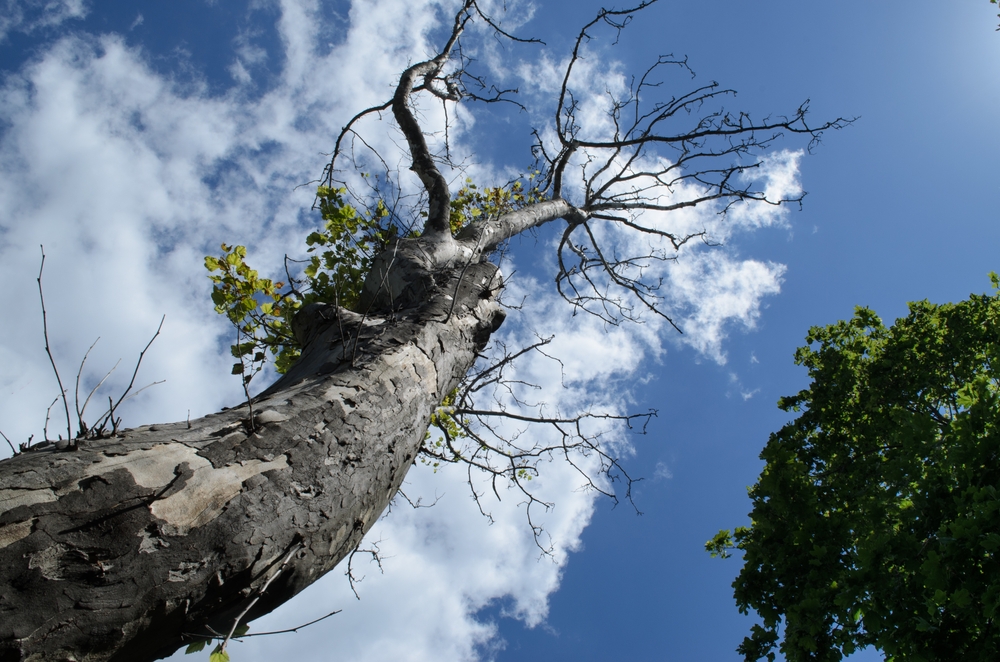Trees add beauty, shade, and value to your landscape—but when a tree becomes diseased or starts to decay, it can also pose a serious risk. Falling limbs, unstable roots, or a full tree collapse can lead to costly property damage or even injury.
At Hagan & Sons, we believe that early detection is key. Knowing the warning signs of tree disease or decay can help you take action before a tree becomes a hazard. Here’s what to look for:

Discolored or Wilting Leaves
If a tree’s leaves are turning yellow, brown, or falling off out of season, it could be a sign of disease. While some seasonal changes are normal, patchy discoloration, curling leaves, or thinning foliage may indicate that the tree is struggling to stay healthy.
Pay special attention to any single branch or side of the tree that looks different from the rest.
Mushrooms or Fungal Growth at the Base
Fungi feed on dead or decaying wood. If you notice mushrooms, conks, or other types of fungal growth near the base of the trunk or along the roots, it could be a sign of internal rot or root decay.
Even if the tree looks fine from a distance, fungus at the base is a major red flag and should be inspected right away.
Cracks, Cavities, or Hollow Sections
A tree with large cracks or cavities in the trunk or major limbs may be structurally compromised. Over time, decay can hollow out portions of the tree, leaving it more vulnerable to falling during storms or under its own weight.
You may also notice sap oozing from cracks, which is another sign of stress or infection.
Dead or Dropping Branches
Deadwood is more than just an eyesore—it’s dangerous. Limbs dropping frequently, especially during mild weather, can indicate disease, decay, or pest infestation. If your tree is shedding branches without explanation, it’s time for a professional inspection.
Also, keep an eye out for bare branches that fail to grow leaves during the spring or summer months.
Peeling Bark or Loose Wood
Healthy bark acts as a tree’s protective skin. If you see bark peeling, cracking, or falling off in large patches, it may mean the tree is stressed or dying. In some cases, this can be the result of insects, environmental damage, or internal rot.
When bark is missing, the tree becomes more vulnerable to further infection.
Unusual Leaning or Root Issues
A tree that suddenly begins to lean—or has visible root lifting or soil cracking at the base—could be in the process of failing structurally. While some trees naturally grow at an angle, sudden leaning or root exposure is cause for concern and should be addressed immediately.
Don’t Wait Until It Falls—Call the Experts
Diseased or decaying trees often look stable until it’s too late. At Hagan & Sons, we offer professional tree inspections, pruning, and removal services to help protect your home and family. Whether you’re dealing with a sick tree or just want peace of mind, our team can assess your landscape and recommend the safest, most effective next steps.
Contact Hagan & Sons today to schedule an expert tree health assessment. Early detection can make all the difference—for your trees, your safety, and your property.
